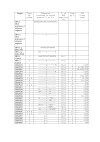Detection, quantification and genotyping of Herpes Simplex Virus in cervicovaginal secretions by real-time PCR: a cross sectional survey
- PMID: 16095535
- PMCID: PMC1236615
- DOI: 10.1186/1743-422X-2-61
Detection, quantification and genotyping of Herpes Simplex Virus in cervicovaginal secretions by real-time PCR: a cross sectional survey
Abstract
Background: Herpes Simplex Virus (HSV) Genital Ulcer Disease (GUD) is an important public health problem, whose interaction with HIV results in mutually enhancing epidemics. Conventional methods for detecting HSV tend to be slow and insensitive. We designed a rapid PCR-based assay to quantify and type HSV in cervicovaginal lavage (CVL) fluid of subjects attending a Genito-Urinary Medicine (GUM) clinic. Vaginal swabs, CVL fluid and venous blood were collected. Quantitative detection of HSV was conducted using real time PCR with HSV specific primers and SYBR Green I. Fluorogenic TaqMan Minor Groove Binder (MGB) probes designed around a single base mismatch in the HSV DNA polymerase I gene were used to type HSV in a separate reaction. The Kalon test was used to detect anti-HSV-2 IgG antibodies in serum. Testing for HIV, other Sexually Transmitted Infections (STI) and related infections was based on standard clinical and laboratory methods.
Results: Seventy consecutive GUM clinic attendees were studied. Twenty-seven subjects (39%) had detectable HSV DNA in CVL fluid; HSV-2 alone was detected in 19 (70%) subjects, HSV-1 alone was detected in 4 (15%) subjects and both HSV types were detected in 4 (15%) subjects. Eleven out of 27 subjects (41%) with anti-HSV-2 IgG had detectable HSV-2 DNA in CVL fluid. Seven subjects (10%) were HIV-positive. Three of seven (43%) HIV-infected subjects and two of five subjects with GUD (40%) were secreting HSV-2. None of the subjects in whom HSV-1 was detected had GUD.
Conclusion: Quantitative real-time PCR and Taqman MGB probes specific for HSV-1 or -2 were used to develop an assay for quantification and typing of HSV. The majority of subjects in which HSV was detected had low levels of CVL fluid HSV, with no detectable HSV-2 antibodies and were asymptomatic.
Figures


References
-
- Kinghorn GR. Herpes simplex Type 1 Genital Infections. Herpes. 1999;6:4–7. http://www.ihmf.org/journal/download/61kinghorn(4).pdf
-
- Nahmias AJ, Lee FK, Beckman-Nahmias S. Sero-epidemiological and -sociological patterns of herpes simplex virus infection in the world. Scand J Infect Dis Suppl. 1990;69:19–36. - PubMed
-
- Greenblatt RM, Lukehart SA, Plummer FA, Quinn TC, Critchlow CW, Ashley RL, D'Costa LJ, Ndinya-Achola JO, Corey L, Ronald AR, et al. Genital ulceration as a risk factor for human immunodeficiency virus infection. Aids. 1988;2:47–50. - PubMed
-
- Austin H, Macaluso M, Nahmias A, Lee FK, Kelaghan J, Fleenor M, Hook EW. Correlates of herpes simplex virus seroprevalence among women attending a sexually transmitted disease clinic. Sex Transm Dis. 1999;26:329–334. - PubMed
Publication types
MeSH terms
Substances
LinkOut - more resources
Full Text Sources
Other Literature Sources
Medical

